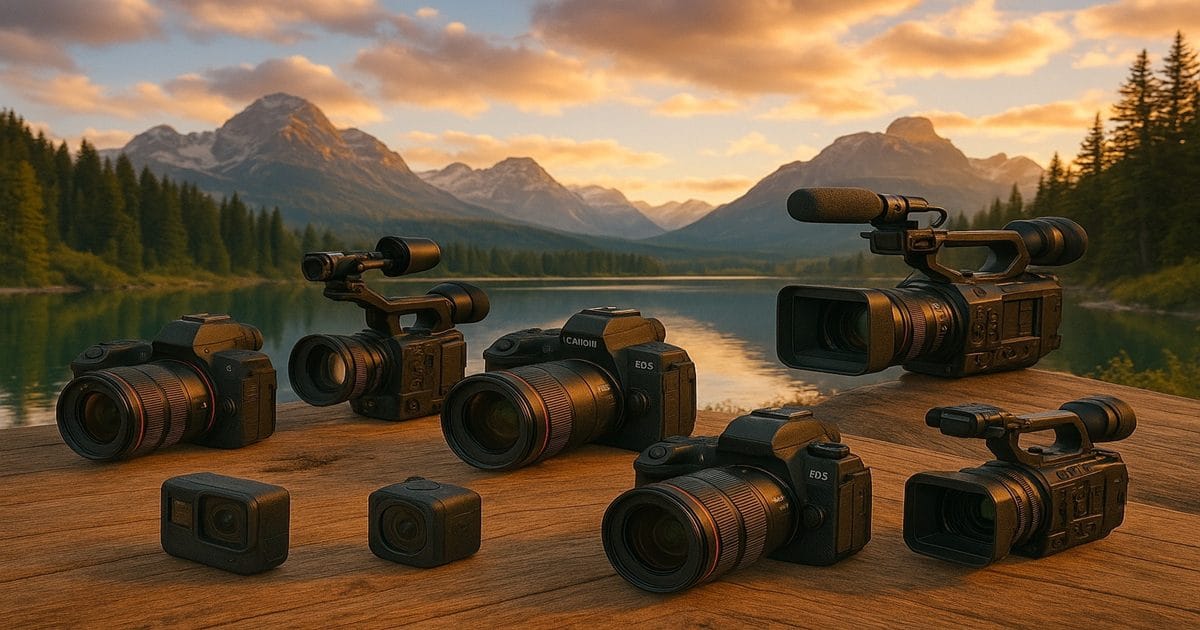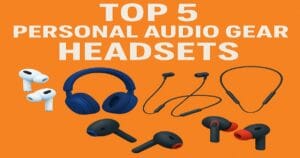8. Panasonic Lumix S5 II
The Lumix S5 II signals a big leap for Panasonic’s full-frame mirrorless line by
introducing phase-detect autofocus—addressing one of the main complaints about
earlier Lumix models. Now, vloggers can enjoy the robust color depth and advanced
video features without the slow or pulsing AF seen in older contrast-detect systems.
It records up to 6K internal, includes advanced color profiles (V-Log, HLG),
and retains Panasonic’s signature top-tier IBIS.
Body design is relatively compact for a full-frame camera, making it suitable for
on-location vlogging or interviews. L-mount collaboration (Leica, Sigma, Panasonic)
provides an expanding lens lineup with everything from budget-friendly primes
to pro-level telephotos. If you’re a dedicated video shooter wanting full-frame
quality but also a camera that can adapt to everyday stills photography,
the S5 II checks a lot of boxes.
Testimonial:
“Upgrading to the S5 II was a no-brainer. The new phase-detect AF
is so much smoother, and 6K internal gives me room for cropping
in the timeline. Color is lovely right out of the camera.”
9. Fujifilm X-T5
The Fujifilm X-T5 is a delight for enthusiasts who value both style and substance.
Building on the X-T line’s classic design with dedicated dials for shutter speed
and ISO, it houses a 40MP APS-C sensor—an upgrade from earlier X-T models. This
translates to beautifully detailed stills and refined 6.2K video capture for
those wanting a bit more resolution than standard 4K.
Fuji’s film simulations remain a favorite for vloggers who enjoy minimal color
grading. The X-T5 also benefits from improved IBIS for stable handheld clips,
though it may not rival the advanced IBIS systems of Panasonic. If you love
that tactile photography experience or want to produce distinctive color looks
straight out of camera, the X-T5 is a strong APS-C solution.
Testimonial:
“Fell in love with Fuji’s film simulations and dials a couple of
years back. The X-T5 is everything I loved, but with higher res
and better video specs. It’s my daily companion for street
photography and casual vlogging.”
10. Sony FX30
A more budget-friendly entry in Sony’s Cinema Line, the FX30 harnesses an APS-C
sensor optimized for video production. You still get many pro-level features:
log profiles, LUT support, a robust cooling system for extended recording,
and 4K at up to 120 fps. The body sports mounting points for rigging up
microphones, handles, or external monitors, which many vloggers and indie
filmmakers find handy.
While the 26MP APS-C sensor may not match the low-light king (A7S III) or
mega-resolution wonders (A7R series), for those building out a dedicated
cinema rig or wanting advanced color control, the FX30 hits a sweet spot.
Autofocus is inherited from Sony’s established real-time tracking system,
giving you reliable face detection even when you’re filming yourself.
If you want to dip your toes into pro-level workflows—like external
ProRes Raw or high-bitrate internal footage—without the cost of
Sony’s full-frame cinema bodies, the FX30 stands out.
Testimonial:
“The FX30 gave me a cinema line experience for under two grand.
Awesome for short films and music videos. I love how I can connect
an external handle and just go.”
Table: Key Specs Comparison
Below is a quick at-a-glance table to help you see how these cameras line up in
some core areas like resolution, max video frame rate, and stabilization.
| Camera | Sensor (MP) | Max Video Res / FPS | IBIS | AF Type |
|---|---|---|---|---|
| Sony A7S III | 12 (Full Frame) | 4K 120fps | Yes | Hybrid (Phase + Contrast) |
| Canon EOS R6 Mark II | 24 (Full Frame) | 4K 60 oversampled | Yes | Dual Pixel AF II |
| Panasonic Lumix GH6 | 25 (MFT) | 5.7K / 4K 120 | Yes | Contrast (Depth from Defocus) |
| Sony ZV-E1 | 12 (Full Frame) | 4K up to 60 (120 upgrade) | Yes | Phase (AI-based) |
| Canon EOS R5 | 45 (Full Frame) | 8K 30 / 4K 120 | Yes | Dual Pixel AF II |
| Fujifilm X-H2S | 26 (APS-C stacked) | 6.2K / 4K 120 | Yes | Phase + Subject Detect |
| Nikon Z6 III | 24.5 (Full Frame) | 4K 30/60 (FW update) | Yes | Hybrid (Phase + Contrast) |
| Panasonic Lumix S5 II | 24 (Full Frame) | 6K / 4K 60 | Yes | Phase Detect (new) |
| Fujifilm X-T5 | 40 (APS-C) | 6.2K 30 / 4K 60 | Yes | Phase (improved algorithms) |
| Sony FX30 | 26 (APS-C) | 4K 120 / 10-bit | No mechanical IBIS, but digital EIS | Phase (Cinema-line AF) |
Chart: Approximate Price Range
Prices fluctuate, but here’s an approximate breakdown of each camera’s body-only
cost in US dollars, though promotions or kit-lens bundles might vary:
| Camera Model | Price Range (USD) | Category |
|---|---|---|
| Sony A7S III | $3,000–3,500 | Pro Video / Low Light |
| Canon EOS R6 Mark II | $2,300–2,500 | Hybrid Workhorse |
| Panasonic Lumix GH6 | $1,900–2,200 | Micro Four Thirds / Video-Centric |
| Sony ZV-E1 | $2,000–2,200 | Full-Frame Vlogging |
| Canon EOS R5 | $3,600–3,900 | High-Resolution Hybrid |
| Fujifilm X-H2S | $2,400–2,500 | APS-C Speed Demon |
| Nikon Z6 III | $1,700–2,000 | Mid-Range Full Frame |
| Panasonic Lumix S5 II | $2,000–2,200 | Phase-Detect Hybrid |
| Fujifilm X-T5 | $1,700–1,900 | High-Res APS-C |
| Sony FX30 | $1,700–1,800 | Cinema APS-C |
Final Thoughts: Choosing Your Perfect Camera
Selecting a “high-end” camera hinges on your creative goals.
Are you prioritizing 8K for future-proofing? Do you want ultra-slow motion
for dramatic b-roll or intense action replays? Are you primarily a
photographer who occasionally dips into video, or do you see yourself
as a budding cinematographer needing advanced color bit-depth?
Your answers help narrow down the top contender among these ten standouts.
Each camera listed offers robust capabilities for both stills and video.
Brands like Sony excel at advanced AF and full-frame performance,
while Panasonic provides top-notch internal video specs, especially
for documentary or run-and-gun filming. Canon offers user-friendly
ergonomics and classic color, while Fujifilm combines style and
fantastic color simulations in smaller sensor bodies. Nikon’s
Z line blends familiar DSLR-esque design with modern mirrorless
innovation.
If you frequently shoot in low-light or prefer smaller file sizes,
a lower megapixel camera might be beneficial (e.g., A7S III or
ZV-E1). If you crave maximum detail in your photos or want to push
the boundaries of resolution, a Canon R5 or Fujifilm X-T5
(40MP APS-C) could be your match. Meanwhile, advanced vloggers
who need fully articulating screens, minimal rolling shutter,
and high-bitrate formats might love the GH6, S5 II, or Sony’s
cinema line approach in the FX30.
Ultimately, the best camera is the one that sparks your creativity
and suits your workflow. Don’t forget to account for lens choices,
battery life, potential overheating in higher video modes,
and whether you prefer a big comfy grip or a leaner design
for traveling.
Armed with the specifics from each model’s CTA above, you can
further explore prices, specs, and sample footage. Happy
shooting—and may your vlogs and photos be as stunning as
your ambition!
Further Resources & Online Security
Curious about more ways to optimize your shooting or editing setup? Check out these articles:
Recommended Reads:
Mini PC Vs Laptops: A Comprehensive Analysis
Modern Wireless Keyboards for Your Computing Journey
For more insight on secure browsing, see Virtual Private Network (VPN)—explaining how
traffic encryption and remote server routing keep your data private.
Top Choice VPN Find Out More





